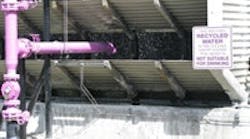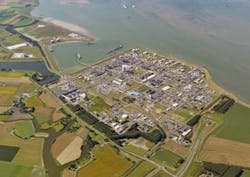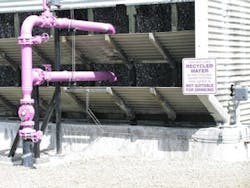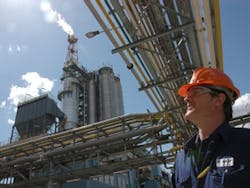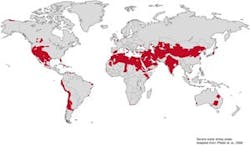As our February cover story "The Tide is Turning," highlighted, chemical makers increasingly are focusing on water-related issues. In particular, concern over availability is spurring
leading operating companies to implement a host of novel strategies and technologies to optimize water use.
For instance, as part of its contribution to World Water Day on March 21st, Dow Chemical, Midland, Mich., outlined how it's optimizing water use at two of its major facilities — at Brazosport, Texas, and Terneuzen, the Netherlands.
Figure 1. Access to fresh water long has been a challenge for Terneuzen facility. Source: Dow Chemical.
[callToAction ]
As a result of all these efforts, Dow identified and implemented:
• Chlorine once-through cooling-water recycle. This project recycles the once-through cooling water for the rectifiers at one of the chlorine plants, as well as the once-through cooling water for an air compressor station to the site's clarified water system for general re-use, and represents about 1,300 gpm in savings.
• Eliminating one-pass fire-water monitor cooling at a power station. Installation of piping allowed use of seawater for cooling, saving 200 gpm of continuous freshwater use and 200–600 gpm during startups and shutdowns;
• Demineralization plant resin change. This project significantly improved the operation of a resin bed, and also included modifications to a reservoir to maintain the gains in efficiency;
• Supplemental cooling automation at another power plant. The idea initially was to change from water cooling to air cooling for a section of the power plant that required intermittent cooling. However, space was insufficient to install the required fin-fan exchangers. So, instead, existing equipment was slightly modified and process control was implemented to allow for the automation of the cooling water valve;
• Improved cooling-tower chemistry. Dow worked with its water treatment chemical provider to modify the water treatment chemistry on 25 cooling towers to reduce makeup water by 400 gpm;
• Soft water recycle. Installation of piping, valves, flow meters and other instrumentation enabled recycling soft water from a propylene oxide plant to the site river water header when only two trains are running — saving 3,000 gpm;
• Improved maintenance of many older river water lines. Identifying and fixing leaks as part of a maintenance strategy reduced water draw by another 1,000 gpm; and
• Other efforts. Eliminating slab washing and watering landscaping saved another 3,500 gpm.
Figure 2. Santa Clara, Calif., hydrogen plant now uses recycled water as makeup for cooling system. Source: Air Products.
Figure 3. Water at Tarragona complex primarily goes into semi-closed circuits such as those for cooling water. Source: BASF.
Figure 4. Water supplies in many regions around the globe already are heavily exploited. Source: BASF.
